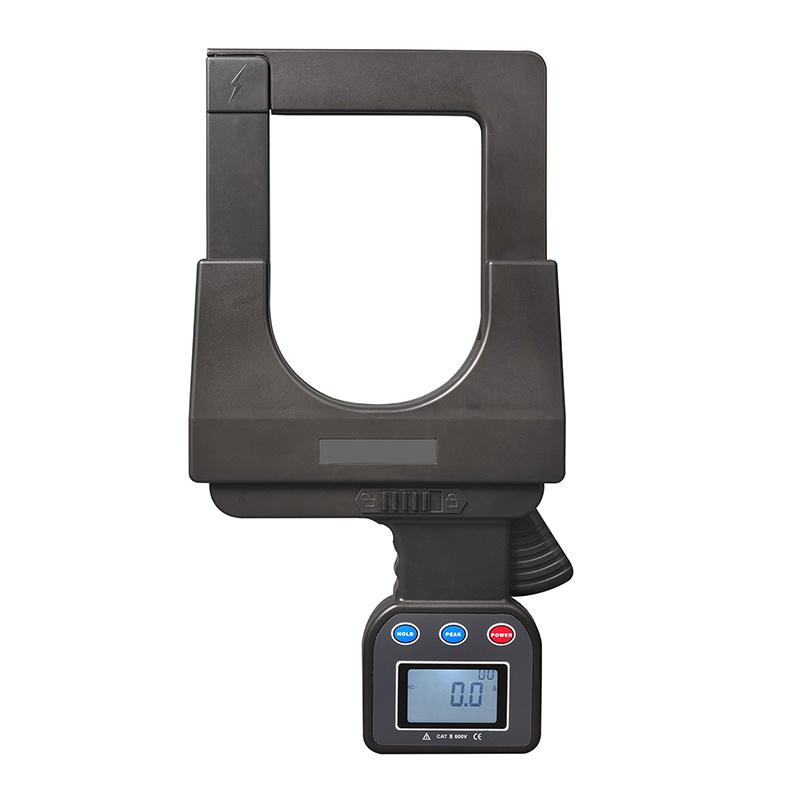How to Use Leakage Current Clamp Meters?
Leakage current clamp meters are indispensable tools for electrical professionals, enabling them to measure and monitor leakage currents accurately. In this comprehensive guide, we'll delve into the intricacies of leakage current, the functionality of clamp meters, and how to effectively use them in various applications.

What is a leakage current clamp meter?
Leakage current clamp meters are specialized instruments designed to measure the leakage current flowing through electrical circuits. Unlike traditional clamp meters that measure current flowing through a conductor, leakage current clamp meters detect current leakage without the need for breaking the circuit.
Importance of measuring leakage current
Leakage current can indicate insulation breakdown, electrical faults, or malfunctioning equipment, posing safety hazards and potential damage to machinery. By accurately measuring leakage current, professionals can identify and address issues before they escalate.
Understanding Leakage Current
Definition and causes of leakage current
Leakage current refers to the flow of electric charge along the surface of or through insulation materials. It can be caused by factors such as moisture, dirt, corrosion, or insulation degradation.
Risks associated with excessive leakage current
Excessive leakage current can lead to electrical shocks, equipment malfunction, or even fire hazards, making it crucial to monitor and control leakage currents in electrical systems.
Features and Functions of Leakage Current Clamp Meters
How do leakage current clamp meters work?
Leakage current clamp meters utilize a specialized sensor that can detect the magnetic field generated by the current flow, even without direct contact with the conductor. This allows for non-invasive measurement of leakage currents.
Key features to look for in a leakage current clamp meter
When choosing a leakage current clamp meter, important features to consider include accuracy, resolution, range, display options, and safety certifications.
Step-by-Step Guide on How to Use Leakage Current Clamp Meters
Preparing for measurement
Before taking measurements, ensure that the clamp meter is properly calibrated and in good working condition. Familiarize yourself with the manufacturer's instructions and safety precautions.
Proper positioning of the clamp meter
Position the clamp meter around the conductor or cable where leakage current is suspected. Ensure that the jaws of the clamp meter are fully closed and aligned perpendicular to the current flow for accurate readings.
Taking measurements accurately
Press the measurement button or trigger to initiate the measurement process. Wait for the reading to stabilize, and record the leakage current value displayed on the meter. Take multiple readings at different points to ensure consistency.
Advantages of Using Leakage Current Clamp Meters
Accuracy and efficiency
Leakage current clamp meters provide accurate measurements without the need for direct contact with live conductors, improving efficiency and safety during troubleshooting.
Non-invasive measurement
The non-invasive nature of leakage current clamp meters minimizes downtime and reduces the risk of electrical accidents, making them ideal for routine maintenance and diagnostic tasks.
Challenges and Limitations
Environmental factors
Environmental conditions such as temperature, humidity, and electromagnetic interference can affect the accuracy of leakage current measurements, requiring careful consideration during use.
Interference issues
External sources of electromagnetic interference, such as nearby power lines or machinery, can distort measurement readings, necessitating proper shielding and positioning of the clamp meter.
Conclusion
Leakage current clamp meters are invaluable tools for electrical professionals, offering accurate and non-invasive measurement capabilities for detecting insulation faults and ground faults in various applications. By following proper usage guidelines and safety precautions, professionals can enhance electrical safety and prevent costly downtime.


